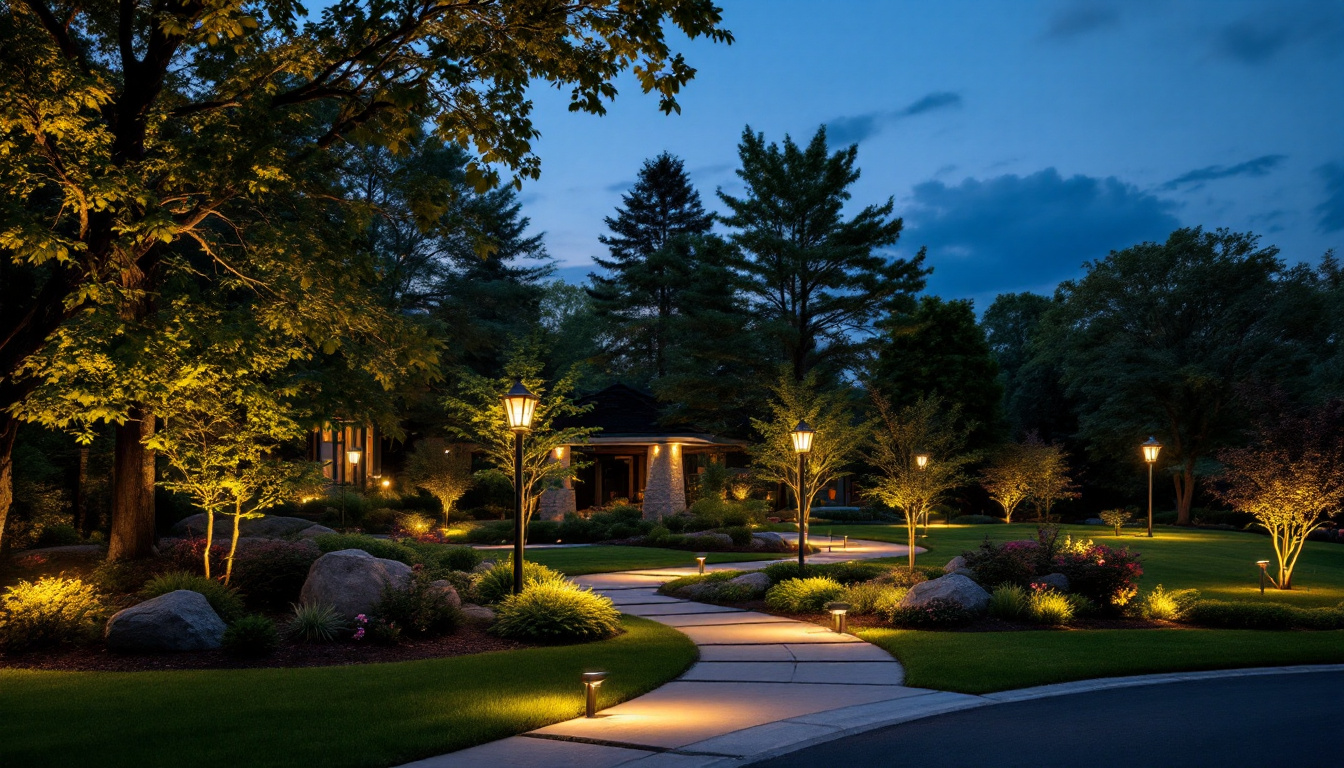

In the ever-evolving world of lighting, LED technology has emerged as a game-changer. For lighting contractors, understanding LED lighting supply is crucial not just for staying competitive, but also for delivering the best solutions to clients. This article delves into the essentials of LED lighting supply, focusing on what contractors need to know to effectively navigate this landscape.
LED, or Light Emitting Diode, represents a significant advancement in lighting technology. Unlike traditional incandescent or fluorescent bulbs, LEDs convert electrical energy directly into light, resulting in higher efficiency and lower energy consumption. This direct conversion process not only enhances the brightness of the light produced but also allows for more compact designs, making LEDs suitable for a wide range of applications, from intricate decorative lighting to powerful industrial fixtures.
One of the key benefits of LED lighting is its longevity. LEDs can last up to 25 times longer than traditional bulbs, reducing the frequency of replacements and maintenance costs. This longevity makes them an attractive option for both residential and commercial applications. In fact, many manufacturers now offer warranties that extend for several years, providing additional peace of mind for consumers and businesses alike. The extended lifespan also means that less waste is generated over time, further contributing to their appeal as a sustainable lighting solution.
Efficiency is a hallmark of LED technology. LEDs typically consume about 75% less energy than incandescent bulbs, which translates to significant cost savings for end-users. Additionally, they produce less heat, making them safer and more environmentally friendly. This reduction in heat output not only enhances safety but also minimizes the burden on air conditioning systems during warmer months, leading to further energy savings. As a result, many energy-efficient building certifications now prioritize the use of LED lighting in their guidelines.
Performance-wise, LEDs offer a range of color temperatures, from warm white to cool daylight, allowing contractors to tailor lighting solutions to specific client needs. This versatility is essential for creating the desired ambiance in various settings, from homes to office spaces. Furthermore, advancements in LED technology have led to the development of tunable white and RGB (red, green, blue) LEDs, which can be adjusted to create dynamic lighting environments. This capability is particularly beneficial in settings like theaters, galleries, and restaurants, where lighting plays a crucial role in enhancing the overall experience.
As sustainability becomes increasingly important in the construction and renovation sectors, LED lighting stands out as an eco-friendly choice. LEDs contain no hazardous materials, such as mercury, and are 100% recyclable. This makes them a responsible option for contractors looking to minimize their environmental footprint. The manufacturing process of LEDs has also improved over the years, with many companies adopting greener practices, such as using renewable energy sources and reducing waste during production.
Moreover, the energy efficiency of LEDs contributes to reduced greenhouse gas emissions, aligning with global efforts to combat climate change. By opting for LED solutions, contractors not only enhance their project offerings but also contribute positively to environmental initiatives. The widespread adoption of LED technology can lead to significant reductions in energy consumption on a global scale, fostering a more sustainable future. Additionally, as governments and organizations continue to implement regulations and incentives for energy-efficient technologies, the demand for LEDs is expected to grow, further solidifying their role in the evolution of lighting solutions.
For lighting contractors, understanding the LED supply chain is essential for sourcing quality products and ensuring timely project completion. The supply chain encompasses manufacturers, distributors, and retailers, each playing a vital role in delivering LED solutions to the market.
Establishing strong relationships with reliable suppliers can significantly impact a contractor’s ability to meet project deadlines and maintain quality standards. It is crucial to evaluate potential suppliers based on their product range, pricing, and customer service.
When selecting suppliers, contractors should prioritize those who specialize in LED products. Specialized suppliers often have a deeper understanding of the technology and can provide valuable insights into product performance and application.
Additionally, contractors should consider suppliers that offer comprehensive warranties and support services. A solid warranty can provide peace of mind for both the contractor and the client, ensuring that any issues can be addressed promptly.
Effective inventory management is crucial for contractors working with LED products. Given the rapid advancements in LED technology, keeping up with the latest products and trends can be challenging. Contractors should develop strategies for managing their inventory to avoid overstocking outdated products while ensuring they have the necessary supplies for ongoing projects.
Implementing an inventory management system can help track stock levels, monitor product performance, and forecast future needs based on project demands. This proactive approach can lead to increased efficiency and reduced costs.
Installing LED lighting requires a unique set of skills and knowledge. Contractors must be aware of the specific requirements and best practices for LED installation to ensure optimal performance and client satisfaction.
One of the primary considerations is the compatibility of LED fixtures with existing electrical systems. Contractors should assess the current wiring and fixtures to determine if any modifications are necessary before installation.
Despite their efficiency, LEDs can generate heat, particularly in high-output applications. Proper heat management is essential to prolong the lifespan of LED products. Contractors should ensure that fixtures are installed with adequate ventilation and that heat sinks are utilized where necessary.
Additionally, understanding the thermal characteristics of different LED products can help contractors select the right fixtures for specific applications, minimizing the risk of overheating and potential failure.
Effective lighting design is critical for maximizing the benefits of LED technology. Contractors should consider factors such as light distribution, color rendering, and the intended use of the space when designing lighting layouts.
Utilizing lighting design software can aid contractors in visualizing and planning their projects. This technology allows for precise calculations of light levels and can help identify potential issues before installation begins.
Compliance with local and national regulations is a vital aspect of any lighting project. Contractors must stay informed about the standards that apply to LED lighting, including energy efficiency ratings and safety regulations.
Familiarity with the latest codes and standards can help contractors avoid costly mistakes and ensure that their projects meet all necessary requirements. This knowledge can also enhance the contractor’s reputation as a reliable and informed professional in the field.
Energy efficiency standards, such as those set by the Department of Energy (DOE) or the International Energy Conservation Code (IECC), dictate the minimum performance requirements for lighting products. Contractors should ensure that the LED products they select comply with these standards to promote energy savings and sustainability.
Incorporating energy-efficient designs not only benefits the environment but can also qualify clients for rebates and incentives offered by utility companies, further enhancing the value of the contractor’s services.
Safety is paramount in any lighting installation. Contractors must adhere to safety regulations that govern electrical installations, including those related to wiring, fixture placement, and load calculations. This adherence ensures the safety of both the installation team and the end-users.
Regular training and certification in electrical safety can help contractors stay current with best practices and regulatory changes, reinforcing their commitment to safety and professionalism.
The LED lighting market is continuously evolving, with new trends emerging that can impact contractors’ approaches to their projects. Staying abreast of these trends is essential for maintaining a competitive edge and meeting client expectations.
Some of the most notable trends include smart lighting solutions, human-centric lighting, and advancements in color-tuning technology. Understanding these trends can help contractors offer innovative solutions that resonate with clients.
Smart lighting technology has gained traction in recent years, allowing users to control their lighting through mobile apps or voice-activated devices. Contractors should familiarize themselves with smart lighting options, including compatible LED fixtures and control systems.
Integrating smart lighting into projects can enhance user experience and energy efficiency, making it an attractive option for both residential and commercial clients. As the demand for smart technology continues to rise, contractors who can provide these solutions will likely see increased business opportunities.
Human-centric lighting focuses on creating lighting environments that enhance well-being and productivity. This approach considers factors such as natural light mimicry and circadian rhythm alignment, which can significantly impact mood and performance.
Contractors should explore how to incorporate human-centric principles into their lighting designs, particularly in workspaces, schools, and healthcare facilities. By doing so, they can offer clients solutions that contribute to healthier and more productive environments.
In summary, understanding LED lighting supply is essential for lighting contractors looking to thrive in a competitive market. From grasping the fundamentals of LED technology to navigating the supply chain and staying compliant with regulations, contractors must equip themselves with the knowledge and skills necessary to deliver exceptional lighting solutions.
By embracing trends such as smart lighting and human-centric designs, contractors can position themselves as leaders in the industry, providing innovative and sustainable options that meet the evolving needs of their clients. As the demand for LED technology continues to grow, staying informed and adaptable will be key to success in the world of lighting contracting.
Ready to elevate your lighting game? LumenWholesale is here to light the path to success. We offer an exceptional range of top-quality, spec-grade LED lighting products at unbeatable wholesale prices, designed specifically for the discerning contractor. Say goodbye to local distributor markups and hello to superior lighting solutions that meet the highest industry standards. With free shipping on bulk orders, you can trust that you’re getting premium lighting at the best value — all with the convenience and affordability that your projects deserve. Don’t compromise on quality; choose LumenWholesale for all your lighting needs. Wholesale Lighting at the Best Value is just a click away.

Discover expert insights on selecting the best LED bulbs for home installations, tailored specifically for lighting contractors.

Discover the pitfalls of purchasing architectural round pendant lights in bulk from local distributors.

Discover the essential guide for lighting contractors with “Lighting Landscape Lighting: The Ultimate Handbook.” Explore expert tips, innovative techniques, and the latest trends to transform outdoor spaces into illuminated masterpieces.

Explore the latest best practices in lightbulb use as lighting contractors share insights on energy efficiency, sustainability, and innovative technologies shaping modern illumination.
Get notified when NEW deals are released.
Optimize your budget with wholesale discounts.
Only top-quality, specification-grade lighting products.
No additional costs at checkout - what you see is what you pay.
We understand the unique needs of contractors.